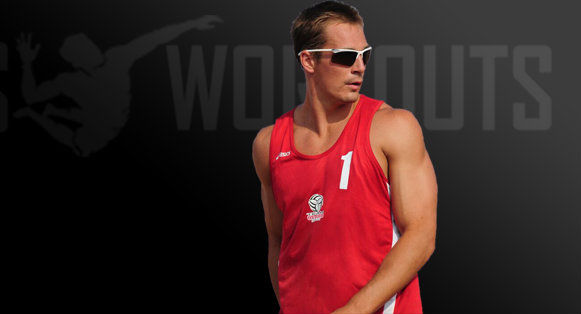Volleyball Nutrition 101

By: Reid Hall
Strength and Conditioning Coach
theathletematrix.com
Most volleyball players have a hard time understanding how important nutrition is on performance because they have NEVER had a healthy diet. An athlete with a bad diet is like owning an expensive car, giving it the lowest grade fuel and not taking it in for regular oil checks, but expecting optimal performance. A healthy diet helps volleyball players perform better for longer, recover faster, feel better, and have a healthy body composition. The purpose of this article is to help educate volleyball players, parents, and coaches on how to eat to be a high performing volleyball athlete.
Here is a quick breakdown of the macronutrients that we consume
Protein
Proteins serve so many important functions in the body that I do not have close to enough time to write about all of them. Protein is the building blocks of our muscles, tendons, and ligaments. If you want to be a strong, powerful, explosive athlete then protein needs to be consumed in all meals. If you do not consume enough protein through out the day, your body starts to breakdown muscle in order to use protein as an energy source. This process makes you weaker and more prone to injury!
Good protein sources
Turkey, Eggs, Greek Yogurt, Milk, Lean Beef, Nuts, Fish, Chickpeas, Tuna, beans, lentils etc..
Fats
The first thing that needs to be made clear is that there are several different types of fats (saturated fats, unsaturated fats, trans fats, Omega 3 polyunsaturated fats, etc…). Eating fat does not make you fat. Eating the wrong types of fat makes you fat! Eating healthy fats actually helps keep you lean. A diet high in omega 3 fatty acids makes your fat cells better able to use fat as an energy source (burning fat). If you consistently eat bad fats your body becomes more resistant to using fat as an energy source.
Good Sources of fat
Avocados, olives, nuts, fish‐ particularly salmon, natural peanut butter, natural almond butter, flax seed, flax seed oil, coconut oil, olive oil, canola oil, sunflower oil, sesame oil.
Bad fats
Anything that comes from a package, anything processed, processed cheese, ice cream, pizza dough. Packaged snack foods, fried foods, candy bars.
Carbohydrates (sugars)
Carbs are extremely important for optimal sport performance because it is one of our initial energy sources. When you consume carbs your body stores these sugars as glycogen. Glycogen is like a fuel tank in a car. When you put your foot on the gas pedal, the fuel gives the car the required energy to drive. When you start exercising, glycogen (your fuel tank) begins to break down into sugars, which you will use as energy in order to match the demands of the task. There are many different types of carbs but I am going to place carbs into two categories: simple carbs and complex carbs.
Simple Carbs (Glucose, Fructose, Galactose, Sucrose, Lactose)
Simple carbs are what people generally refer to as sugar. If someone is eating something that tastes very sweet, then it is generally full of simple carbs.
Examples of foods high in simple carbs
Sports Drinks (Gatorade, Powerade, etc), candy, most cereals, juices, pop, fruits
Good Things about Simple Carbs
Simple carbs are great to consume in small amounts during exercise because your body is able to use the sugar as an immediate energy source. For instance, drinking Gatorade or some other sugary sports drink when practicing/competing/exercising will keep your mind and body energized for longer periods. The amount of simple carbs consumed during exercise should be relative to how hard and for how long you are exercising. In a two hour, high‐paced practice a full bottle of sport drink or 2 pieces of fruit would be sufficient amounts of simple carbs. In a less intense practice you should consume anywhere from no simple carbs to half a sports drink or one piece of fruit.
Bad things about simple carbs
You should have a negative view of simple carbs (except coming from fruit) except anytime that you are performing strenuous exercise. The general population is getting heavier and heavier. The increase in weight is more related to diets high in simple carbs than diets high in fats (but it is a combination of the two). Simple carbs are digested and absorbed really quickly, so if you are not exercising and your glycogen stores are full (which they normally are) the carbs are stored as fat.
Fruits*‐ fruits are composed of simple carbohydrates, but are digested much slower than sport drinks or pop because fruits also contain a high fiber content which slows down digestion. Which means less fat storage!
Complex Carbs
Complex Carbs are the sugars that you should be consuming outside of physical activity. Complex carbs are digested much slower than simple carbs. Your body is constantly burning sugars even when you are not exercising in order to meet the demands of basic bodily functions. Since complex carbs are digested slowly, they are able to gradually meet the simple demands of your body, and slowly replenish glycogen stores, and not get stored as fat. On the other hand, simple carbs are digested very quickly and provide your body with an overwhelming amount of sugar and gets stored as fat.
Complex carb sources
Sweet potatoes, quinoa, brown rice, whole wheat bread, lentils etc…
Vegetables
A half‐cup of vegetables should be consumed at every meal! Vegetables are high in the essential vitamins that are necessary to make our bodies perform optimally. Vegetables are high in fiber. Fiber slows the digestion rate of whatever you are consuming. Things that are digested quickly, like simple carbs get stored as fat. By increasing the fiber content (adding vegetables) you slow the digestion rate and your body gradually absorbs the nutrients. Vegetables are low in calories, but make you feel full. Eating a lot of vegetables controls your hunger urges, limiting over‐ eating.
Balanced Meals
All meals should contain a healthy balance of carbs, healthy fats, protein, and lots of vegtables. The calories in a balanced meal should be composed of 45 to 55% carbs (except at night time), 30 to 40% protein, and 20 to 30% fat. You do not need to overly stress about the percentages, use them as a guideline.
Frequency of meals
Eating four or five smaller sized, balanced meals is much better then eating three large meals. When eating three large meals, your body is unable to absorb all the nutrients that your body is taking in. This will make you feel low on energy and also increase fat storage. Eating four or five smaller meals is more ideal because your body is able to fully absorb the nutrients. You should be eating every three or four hours.
Breakfast
Hands down the most important meal of the day for athletes. When you wake up in the morning your body is pumping out the hormone called cortisol. Cortisol is the same hormone that is released when you are really stressed out. Cortisol causes your body to be in a catabolic state (meaning your muscles are breaking down!). The sooner that you are able to start eating in the morning, the sooner your body is able to switch from a breaking down state (catabolic) to a building up state (anabolic).
EAT A BIG BALANCED BREAKFAST
Examples of balanced breakfasts
- 2 eggs scrambled with added vegetables, 2 pieces of fruit, and 1 piece of whole wheat toast with natural peanut butter.
- Plain cooked oatmeal with added blue berries, mixed nuts, greek yogurt, and a scoop of whey protein powder
- A high fiber low sugar cereal with added berries and nuts
Examples of other healthy meals to be consumed through out the day
- Half cup of cooked quinoa, mixed vegetables, avocado, chicken breast
- Sweet potato, salad, Salmon
- Brown rice, Broccoli, Lentils and Chickpeas, glass of milk
- Whole wheat pita with mixed vegetables, rice, and turkey
Eating before practice/workouts
45 minutes before physical activity (practice or workout) eat a small to medium sized carb/protein snack.
Examples snacks
- Piece of fruit and a glass of milk
- Berries and nuts
- 1 green apple, 10 raw almonds
- 1/4 cup of greek yogurt, with a banana, oats, and nuts
- Half of a chicken sandwich
- Toast with a tablespoon of natural peanut butter or almond butter
Post Practice/Exercise
When exercising your body enters a catabolic state and will remain in this state until you eat! This is why a lot of athletes and body builders will have a protein shake immediately after exercising. You are able to limit the catabolic state when exercising by consuming small doses of simple carbs during practice/workout (sports drink, fruit, etc…). After strenuous exercise your body is craving nutrients. Your body needs both simple carbs and protein immediately post workout. A good strategy is to consume a Whey Protein shake and a banana immediately after your practice/workout. 45 minutes after practice consume a meal that is high in carbs and Protein.
Good options to have immediately post workout:
- Whey protein shake and a banana
- Chocolate Milk
- Tuna Sandwich
- Greek Yogurt and Berries
Meal options 45 minutes after your workout
This meal should be high in complex carbs and protein.
- Halibut (or another type of meat), 2/3 cup of quinoa, 2cups of greens (could be a salad, broccoli, asparagus, etc…)
- Chicken , 2/3 cup of wild rice, potatoes
- Meat sandwich or pita, with lots of greens and other vegetables, healthy soup, and a glass of milk
Start making small improvements with your diet. It is hard to make a compete 180 and change to many things at one time. I recommend each week focusing on improving one component at a time. For instance, in week one I will focus on eating more vegetables in each of my meals. In week two I will focus on having a high protein and carb snack immediately after practice. As you make more and more of these habits a routine you will start feeling and performing at a much higher level. Once you feel this level you will never want to go back!

Check PAKMEN’s High Performance Volleyball programs |
Check PAKMEN’s Leagues |
